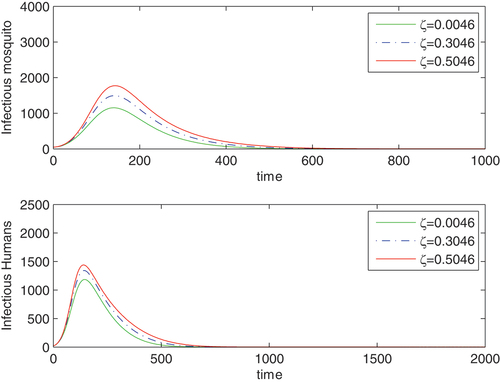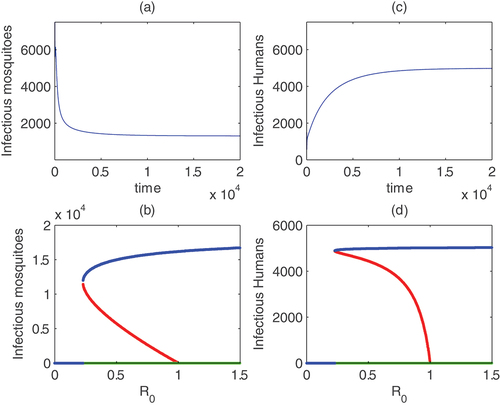Figures & data
Table 1. Model parameter and their descriptions
Figure 1. A time plot reflecting the effects of vertical transmission in the vector population on disease prevalence: ζ = 0.0046 (continuous/green curve), ζ = 0.3046 (dashed/blue curve) and ζ = 0.5046 (continuous/red curve). Other parameters are ,
,
,
For each case
.

Figure 2. Bifurcation curves reflecting the results of theorem (4.3). Unstable branch (red), stable branch (blue), green (extinction); α = 0.0062 (continuous curve) and α = 0.0013 (dashed curve). Other parameters are β = 0.15,
,
based on the data we used in this figure, we have
for
and
for
and
the bifurcation is backward for α = 0.0062 and forward when α = 0.0013.

Figure 3. Endemic asymptotic level of infectious mosquitoes and humans for ζ = 0.77
for these set of parameters,
but mosquito and human populations equilibrate to endemic levels (see time plots (a) and (c) with initial value
). The bifurcation diagrams of mosquitoes and humans as
changes given in windows (b) and (d) show backward bifurcations where two endemic equilibria exists for
.

Table 2. Parameter estimation for dengue fever. Rate is per day
